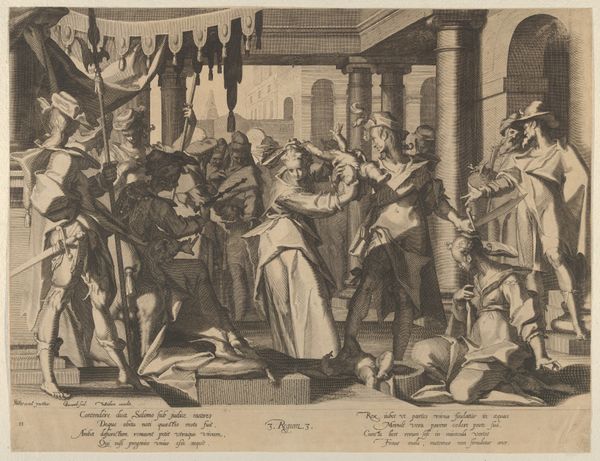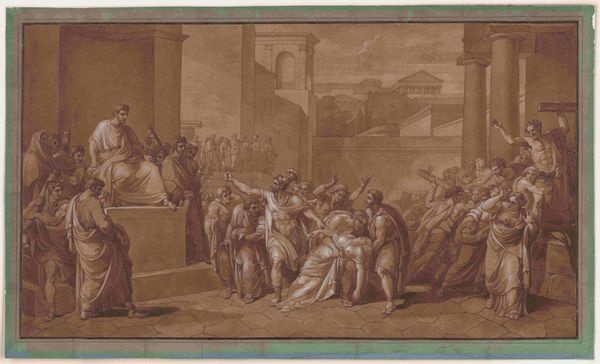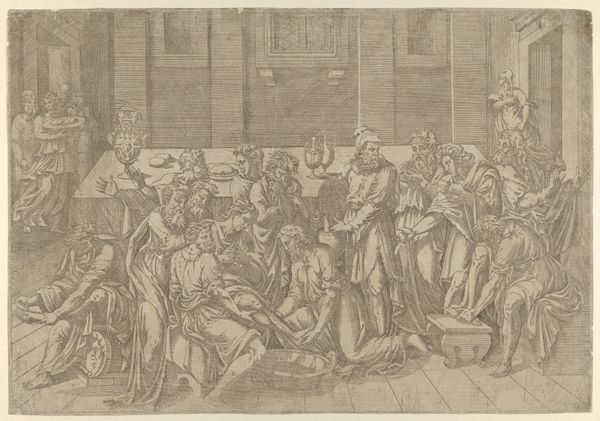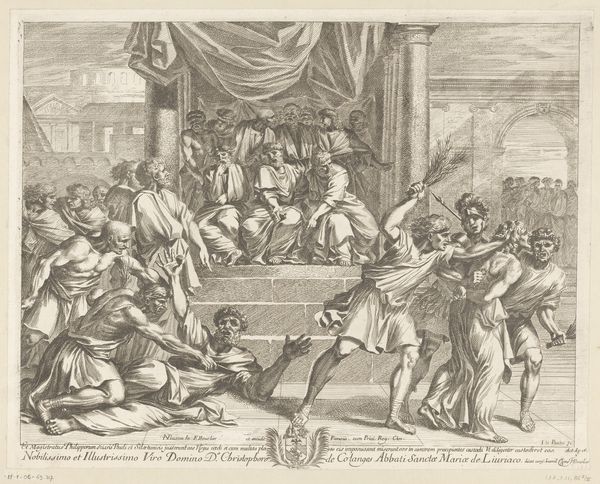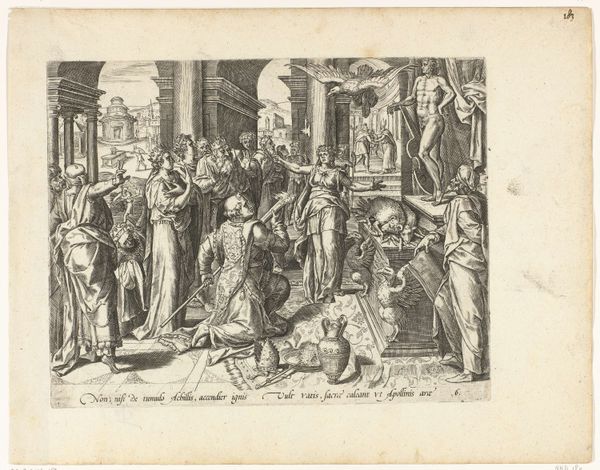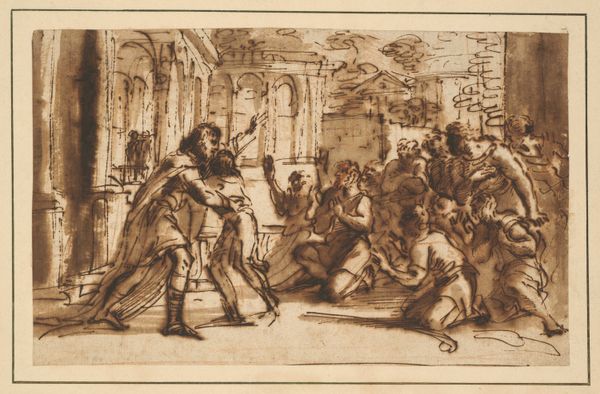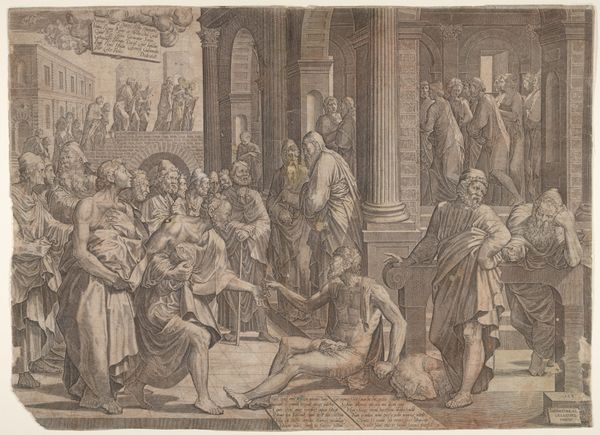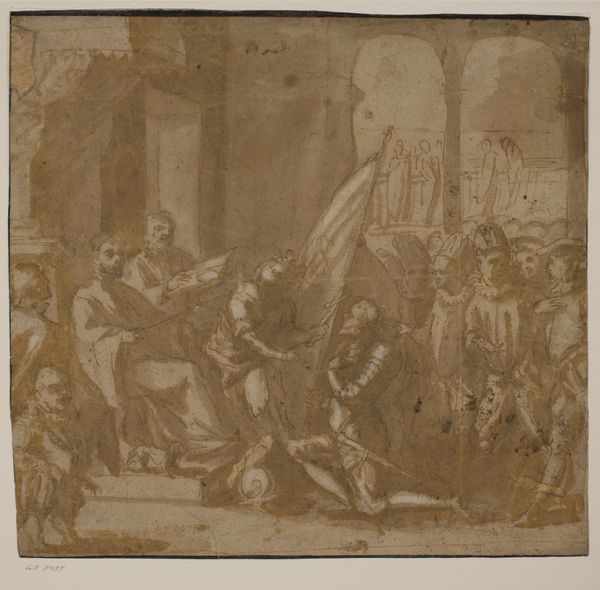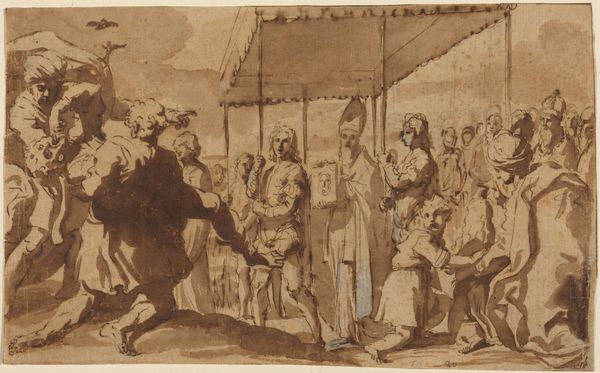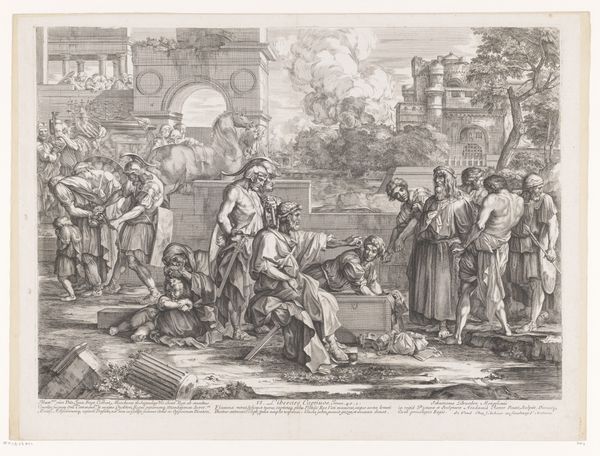
An Ecclesiastic (Pope?) Blessing a Book before the Sacred College 1580 - 1590
0:00
0:00
drawing, print, ink
#
drawing
#
narrative-art
# print
#
figuration
#
11_renaissance
#
ink
#
history-painting
#
academic-art
Dimensions: sheet: 8 7/16 x 11 5/16 in. (21.5 x 28.7 cm) maximum; original support
Copyright: Public Domain
Editor: We're looking at Cesare Nebbia's "An Ecclesiastic (Pope?) Blessing a Book before the Sacred College," created around 1580-1590. It's an ink drawing. I’m immediately drawn to the density of the figures and the contrast in textures, the robes look heavy, and the linework seems incredibly detailed. What stands out to you, looking at this from a broader perspective? Curator: It is essential to consider the social context in which this ink drawing was produced. The method of printmaking and its impact on distributing such religious images becomes a primary point of investigation. The labor involved in the production – the materials, the time invested in each stage, from initial sketch to the final print – offers insight into how this image served to circulate religious ideology and, crucially, how accessible or inaccessible it was to different social classes. Editor: So, you're less focused on the figure of the Pope himself, and more on how the image functions within the wider society? Curator: Exactly. Let’s consider the materials. The relative cheapness and portability of ink and paper compared to, say, fresco painting, enabled the mass production of images. Who controlled these resources? Who profited from the image’s distribution? Also, think about the book being blessed: what is it? And for whom is this blessing significant? These questions all lead us to a richer understanding of the artwork as a cultural object. Editor: That makes me wonder, what did a drawing like this *do* at the time? Curator: Its probable function as a preliminary design for a print expands the scope for us. We can explore printmaking during the Counter-Reformation. Were images like this used as propaganda? Or, given the detailed craftsmanship visible here, was it meant for a more elite audience who would appreciate the technical skill and invest in collecting this work and related devotional prints? Editor: This has given me so much to think about – that this image is only a moment in a whole chain of production and consumption. Thanks. Curator: It also forces us to look beyond aesthetics and question how art serves social, economic, and ideological functions. Food for thought.
Comments
No comments
Be the first to comment and join the conversation on the ultimate creative platform.

